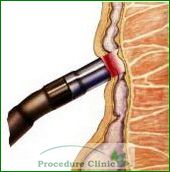The importance of diet to the prevention and treatment of hemorrhoids is often understated. Even for the most severe hemorrhoids, good diet is important for proper treatment and recovery. To prevent and manage hemorrhoids, one must ensure that they take in enough fiber. Fiber is interesting, as it’s not a nutrient in the same sense as minerals and vitamins are, but that doesn’t mean it’s not important. Most dieticians agree that Americans don’t eat enough fiber- the recommended amount is 32 grams per day. The average American doesn’t even come close at 15 grams a day. In fact, research shows that a whopping 97% of Americans do not meet the minimum nutritional standard.
So what is fiber exactly?
Fiber is a carbohydrate, the same class as starches, sugars, but are different because they are not digestible by the human body. Fiber regulates your body’s sugar intake, and keep hunger and blood sugar in check.
Fiber comes in two varieties, soluble and insoluble. Soluble fiber can be dissolved in water, lowers glucose levels, maintains blood cholesterol, and most importantly, ensures passage of stool without constipation thanks to its water-absorbing properties. It’s contained in barley, nuts, seeds, beans, lentils, etc. Insoluble fiber is found in wheat bran, vegetables, and whole grains. Insoluble fiber adds bulk to stool, which helps food pass quickly through the intestines. It’s what your grandmother might have called “roughage”. It’s the tough parts in stalks, stems, and seeds. The positive effects of fiber on your digestive system help prevent and manage the symptoms of hemorrhoids.
What are good foods for fiber?
Beans, lentils, and nuts all contain large amounts of fiber. Just a half cup of beans will have about 7-10 grams of fiber, about a third of your daily minimum, containing a mixture of soluble and insoluble fibers. Beans are fairly cheap, as well as a good source of protein. Almonds and pecans have around 3 grams of fiber per half cup, as does edamame.
Grains are another great source. Look for whole-grain items as opposed to the white variety. Bread, pasta, and crackers made from flours, buckwheat, cornmeal, or rye will contain insoluble fiber. Oats and barley will also contain fiber. Lots of cereals have fiber, either naturally or added artificially- fiber containing cereal is a good way to start the day!
Fruit and vegetables contain loads of fiber, and also have many other nutritional benefits.
Plant foods with skin contain insoluble fiber as well as flavonoids that help control intestinal bleeding. Fruit with lots of colour and darker vegetables contain a lot of fiber. Adding fruit to cereal, apples to salad, spinach with eggs, or zucchini in spagheti are great ways to add fiber.





